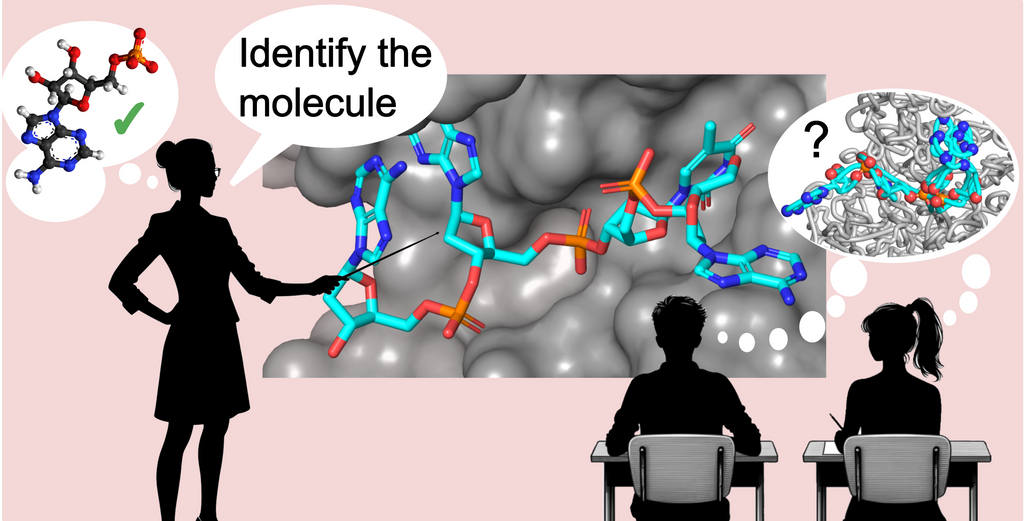From Spaghetti to Structure
Teaching Students the Art of Molecular Visualization
Teaching Students the Art of Molecular Visualization
On the first day of her 200-person CAS CH373: “Principles of Biochemistry” class each semester, Didem Vardar-Ulu puts up a slide with a visual representation of a molecule and asks her students to identify it.
The image (see below) represents a fragment of a DNA strand bound to its partner protein, but to an uneducated eye, it can look somewhat like spaghetti.
Vardar-Ulu’s goal is that on the last day of the class, her students will understand what the image represents and be able to tell a story about what the molecule’s structure means for its function.
“When I look at an alpha helix, I can tell a huge story of what is there — how many carbons, oxygens, what interactions they’re making, it’s all hidden in that ribbon,” Vardar-Ulu. “This skill of being able to decipher what you’re seeing, that’s molecular visualization.”

Just as doctors need to be able to interpret x-rays, Vardar-Ulu says, life sciences students need to be able to decode visual renderings of cells, proteins, and molecules. But most teaching materials rely on two dimensional figures, which are difficult for students to interpret as scientific material gets more complex. So students often rely on others’ interpretations of these figures rather than forming their own.

Vardar-Ulu is trying to change that. A senior lecturer in chemistry, Vardar-Ulu is passionate about teaching students how to better understand and interpret complex molecular visuals as they move through higher-level science courses, and she is working to create learning and assessment materials to do so.
“My personal interest for many many years has been how to bring molecular visualization skills into the teaching curriculum,” she said. “Students should be able to look at specific representations and be able to tell molecular stories but there is no deliberate curriculum that actually teaches them to do that.”
Vardar-Ulu is collaborating with Molecular CaseNet, a community of educators and scholars working on creating Molecular Case Studies where students can put molecules into real-life context, and BioMolViz, a community of educators, assessment experts, and biomolecular visualization enthusiasts who are trying to understand what students truly see when they look at an image, how they incorporate imagery into their learning, how best to assess their learning and developing molecular visualization skills.

With NSF funding, BioMolViz developed a visual literacy framework to guide the incorporation of biomolecular visualization skills into college biochemistry and molecular biology courses to make graduates more successful in the life sciences and developed an assessment repository to share broadly with instructors interested in promoting these skills in their classrooms
With AI, Vardar-Ulu said, it is also becoming clear that students will need to spend more time ensuring the correct interpretation of images and will be using more visual analysis skills to decipher right from wrong.
“I would like our younger generation to really get that core understanding of how these pictures are created, what they represent, and why, and not just blindly believe what somebody else tells them what they say,” she said. “I want them to understand that even with things we are all familiar with, when you’re a novice, there’s one way you see it; when you’re an expert there’s a different way you see it. It’s not just learning a new thing, but learning to look at something you have always been seeing differently, at a molecular level.”
— Catlin Reidy (COM’25) and Abby Van Selous (COM`24) contributed to this story.